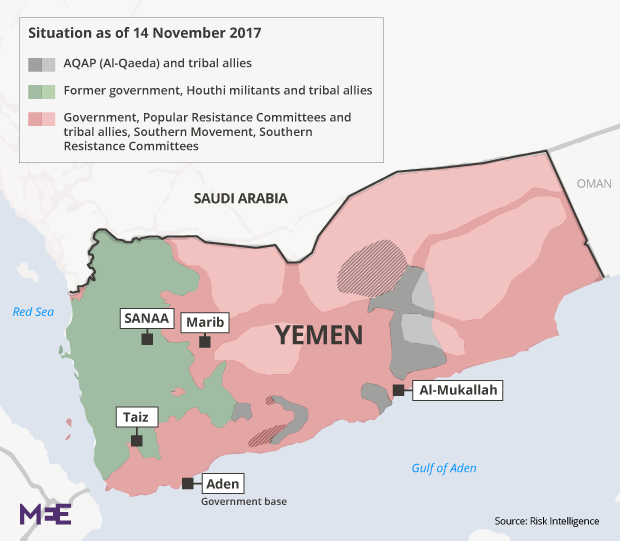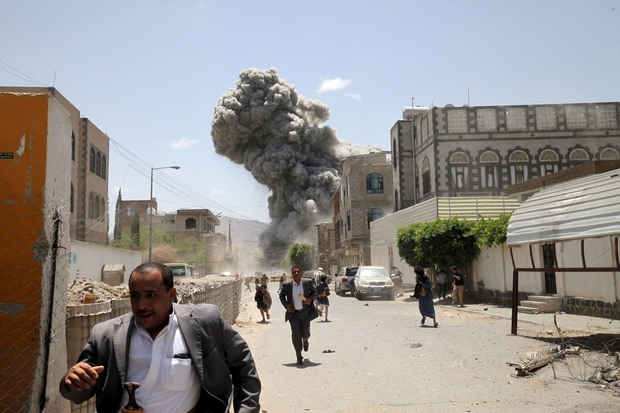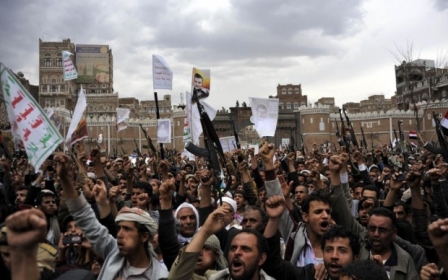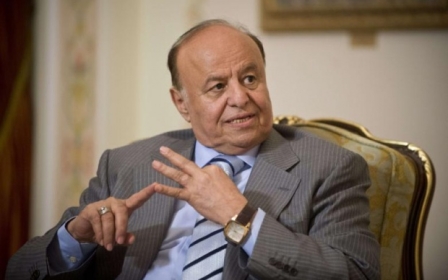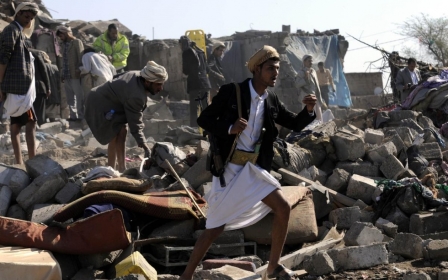Saleh's death is a blow to Saudi exit plan from the Yemen quagmire
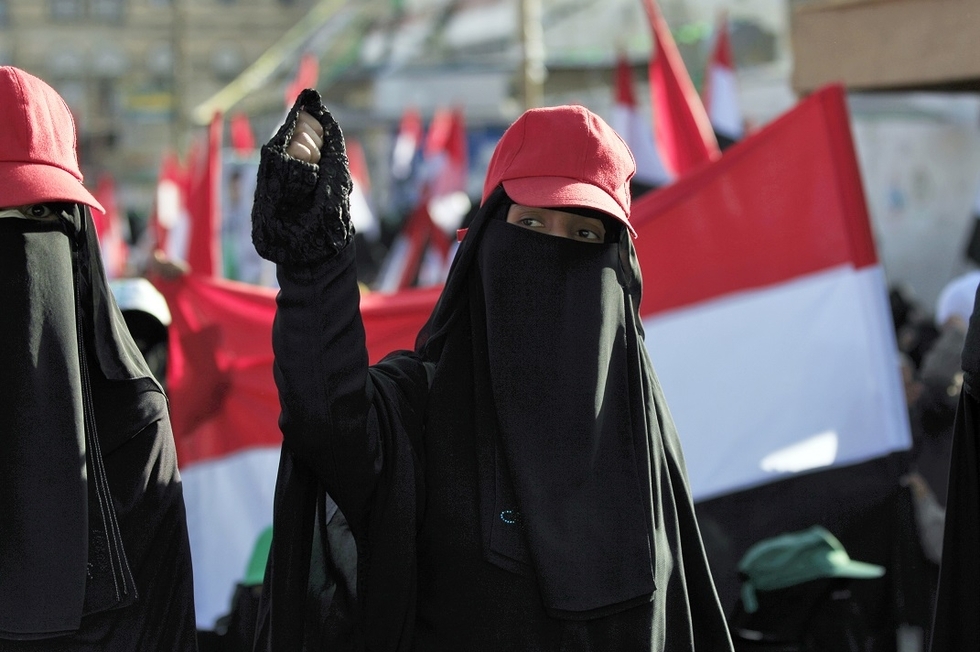
The death of former Yemeni president Ali Abdullah Saleh on Monday has dealt a blow to the Saudi attempt to find an exit from the Yemeni quagmire, which has been a strategic failure that has yet to accomplish its goals of curtailing Houthi power and restoring the government of Abd Rabbuh Mansour Hadi.
Two key questions need to be addressed in the aftermath of Saleh death. First, what made the Houthis and Saleh ally in the first place, and can the Houthis find a new domestic ally?
Second, how is Saleh's removal a blow to Saudi Arabia and the UAE's attempt to find an exit strategy from the conflict and who are the Yemeni proxy forces that the Gulf players could ally with in the aftermath of Saleh's death?
A short answer to these questions is that both the Houthis and the Gulf powers will have difficulty finding any local Yemeni partner that could bring all the parties in the war to a negotiated, political solution.
The unravelling of Saleh-Houthi alliance
Saleh's death would appear to be an intra-Shia Zaydi clash with the Houthis killing a fellow Zaydi. However, power, not sect, explains why they turned against one another. Shia Zaydi is a branch of Islam adhered to by around a third of the country's population.
An examination of the past demonstrates that the Houthi-Saleh alliance was a marriage of convenience, not based on shared sectarian identity, and would ultimately unravel over past grievances, evident by the clashes over the weekend.
Yemen's 35 percent Zaydi Shia are primarily concentrated in the north of the country.
It was an alliance of convenience rather than one based on shared sectarian affiliation
The Houthi movement takes its name from its leader Hussein al-Houthi whose following developed in the early 1990s as a religious programme to promote Zaydism among the youth in Saada and its environs, in response to Saudi Wahhabi proselytising in their region.
It soon evolved into a party with members of parliament, but Saleh's government sought to curtail its power.
When he deployed military forces to Saada in 2004, the Houthis began to purchase weapons to defend themselves.
While Saleh himself was Zaydi, he engaged in a bitter war against his fellow co-religionists, the Houthis, projecting himself as a nationalist president eschewing any loyalty to the provincial Houthis.
In 2004, under Saleh’s orders, the Yemeni military killed Hussein al-Houthi, but the movement continued under the leadership of his father and brother, and fighting continued until 2010, with the Houthis managing to survive five military campaigns. What began as a student movement had evolved into a seasoned militia, named Ansar Allah (The Supporters of God).
Its appeal also spread beyond just Zaydi students to Yemenis opposed to Saleh's government. The demonstrations that erupted in Yemen in January 2011 provided the Houthis the opportunity to undermine Saleh.
While the Houthis are Zaydi, their appeal went beyond their sectarian base, attracting Yemenis who joined protests during the Arab Spring, demanding democracy. Saleh eventually resigned and Hadi, his former vice president, led a new government that proved ineffective in ruling the country.
The Houthis’ success in seizing the capital Sanaa in 2014 from Hadi had to do with a tactical alliance with officers still loyal to Saleh, the ousted president, who still held influence behind the scenes. He and the officer corps made common cause with the militia.
It was an alliance of convenience rather than one based on shared sectarian affiliation, and tensions persisted between the two factions, which came out in the open with skirmishes in August, and again during the weekend when Saleh attempted to reconcile with Saudi Arabia.
Tension between Saleh and Iran
The dominant narrative of the Yemeni civil war frames it as a sectarian conflict between Zaydi Shias and Sunnis, backed by Shia Iran and Sunni Saudi Arabia respectively. However, the conflict was always more about domestic Yemeni grievances, and external players finding an opportunity to expand their sphere of influence.
Iranian support for the Zaydis cannot be explained by sectarian motivations alone as the Zaydis share significant difference with the Twelvers of Iran. While they would be "Fivers", recognising only the first five of the 12 Shia imams, and differ from the "Twelvers" in Iran or Iraq as Zaydis have no ayatollahs or religious hierarchy.
While I lived in Yemen, I met Yemeni students who had studied in Qom, in Iran, adopted Twelver Shi'ism and brought it back to Yemen.
Saleh accused both the Houthis and Yemeni converts to Twelver Shi’ism of being agents of Iran, only to form an alliance with the Houthis and Iran, then abruptly abandoning it by making overtures to Saudi Arabia.
Yemen's grand bargain
The Yemeni leader’s death was a result of his overtures to Saudi Arabia, which were reciprocated by Saudi Arabia - acknowledging Saleh as the "former president" of Yemen, rather than the "ousted president".
The latest overture preceding his death was most likely part of a UAE plan to undermine the Houthi-Saleh alliance, grooming Saleh’s son Ahmed to take a prominent position in a new government that excluded the Houthis.
Saudi Arabia apparently acceded to this plan as it offered Riyadh a way to extricate itself from the Yemeni conflict after failing to crush the Houthis through its air campaign. While the unravelling of the Houthi-Saleh alliance did occur, it did not happen according to the Emirati-Saudi plan.
Houthis are a seasoned military force under a single chain of command, while the military forces supported by Saudi Arabia and the UAE are in disarray
In 2015 Saudi Arabia and the UAE backed Hadi, who fled to Aden, after the Houthi takeover of Sanaa. However the UAE eventually lost confidence in Hadi, and instead of supporting the remnants of the Yemeni military under his command, fostered the formation of their own proxy force, the Security Belt.
To add even more tensions in the south of Yemen, the UAE in October sought to curb the power of the Islah party, a Yemeni branch of the Muslim Brotherhood, only to consider bringing them into a negotiated solution with Saleh as a means to end the war.
Both the UAE and Saudi Arabia sought an ally in Sanaa and the north of Yemen through Saleh, due to their inability to find a reliable partner in Aden or the south that could bring the war to a negotiated end.
In a macabre drama, Saleh's death ultimately undermined Saudi and Emirati attempts to undermine the Houthis.
What next for Yemen
As for the future of Yemen’s conflict after Saleh’s death, the fate of his loyalist forces in the military as well as his party, the General People’s Congress, remains unclear.
Will they fight the Houthis for vengeance, will some loyalists realign with the Houthis, or will they fracture entirely? The problem with predicting the outcome is there are no reliable figures for how many fighting men and what military assets are in the hands of the Houthis, the Saleh followers, Hadi's forces or the UAE proxies.
The death of Saleh will not augur in the demise of the Houthis, however. The Houthis have always been wary of the Saleh faction due to their mutual animosity in the past, and were most likely preparing for this ultimate confrontation.
The only guess to hazard at this point is the advantage lies with the Houthis.
Houthis are a seasoned military force under a single chain of command, while the military forces supported by Saudi Arabia and the UAE are in disarray.
Even if the Houthis were to lose control over parts of the capital Sanaa, or even the entire capital itself, they would still maintain their base in this area in the north, particularly their bastion in Saada.
Riyadh could intensify its air campaign, but it will not change facts on the ground. Even though the Houthis lost the support of Saleh's military forces, their only domestic Yemeni ally, this does not augur an immediate Saudi victory against a well ensconced rebel force in the mountainous terrain of north Yemen.
No military campaign in history, whether it was the Ottomans or Gamal Abd al-Nasser's campaign in the 1960s succeeded in completely subduing this territory militarily.
Unfortunately the infighting among alliances in Yemen and the exacerbating role of external players is coming to resemble the conflicts in Libya and Syria, where attempts at mediation have proven elusive for years due to the numerous players involved, both external and domestic.
- Ibrahim al-Marashi is Associate Professor of Middle East History at California State University San Marcos. His publications include: Iraq's Armed Forces: An Analytical History (2008), The Modern History of Iraq (2017), and A Concise History of the Middle East (forthcoming).
The views expressed in this article belong to the author and do not necessarily reflect the editorial policy of Middle East Eye.
Photo: A female supporter of Yemen's Houthi rebels attends a rally celebrating the death of Yemeni ex-president Ali Abdullah Saleh a day after he was killed, in the capital Sanaa on 5 December 2017. (AFP)
Middle East Eye propose une couverture et une analyse indépendantes et incomparables du Moyen-Orient, de l’Afrique du Nord et d’autres régions du monde. Pour en savoir plus sur la reprise de ce contenu et les frais qui s’appliquent, veuillez remplir ce formulaire [en anglais]. Pour en savoir plus sur MEE, cliquez ici [en anglais].



